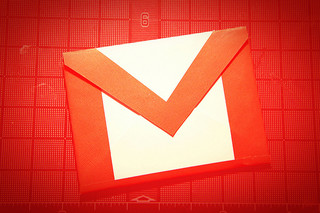 Email marketers got another big surprise from Google last week at the M3AAWG conference in San Francisco when Google’s head of anti-abuse initiatives, Vijay Eranti, announced the launch of the unsubscribe button for Gmail users.
Email marketers got another big surprise from Google last week at the M3AAWG conference in San Francisco when Google’s head of anti-abuse initiatives, Vijay Eranti, announced the launch of the unsubscribe button for Gmail users.
Zach Miners of PCWorld reported that the unsubscribe button will appear in most promotional messages that offer an unsubscribe option. Instead of scrolling and searching for a way to opt-out of receiving those promotional messages, Gmail users can now simply click on the unsubscribe button that will appear at the top of the message right next to the sender’s name and email address. Without leaving Gmail and with a single mouse click that requires no scrolling or searching, recipients can quickly unsubscribe from promotional email messages.
While email marketers might initially react negatively to the Gmail unsubscribe button, as some did when Google rolled out Gmail tabs last year, the launch isn’t as bad as you might think. Google claims to be launching the unsubscribe button to reduce the number of email messages that are marked as spam by recipients. Eranti explained that consumers might subscribe to promotional emails from a company and later decide they don’t want to receive those messages anymore. It’s faster to flag those messages as spam than it is to open the messages, find the unsubscribe link, click the link and follow the instructions on a separate web page to complete the unsubscribe process, and then return to their email account. However, flagging those messages as spam is bad for the senders, because over time, Google will start to identify all of the messages from that company as spam. That’s a big problem for a company.
Rather than view the unsubscribe button as a problem, view it as a positive change that will reduce the number of times your messages are flagged as spam but also ensure that only the people who really want to receive your promotional messages are getting them. The quality of your list will improve as you work to attract more targeted subscribers while letting the non-interested individuals choose to unsubscribe easily.
Of course, the new unsubscribe button, like Gmail tabs, is just one more way that email marketers are challenged with reaching potential customers. However, it’s also a motivator to ensure you create the most compelling subject lines, offers, content, and calls to action. Useless messages are more dangerous to brand marketers than ever. Instead, you need to add value to recipients’ lives with every message your brand sends, and you need to make it extremely clear how each message will deliver real value to consumers in every subject line.
What do you think? Leave a comment below and share your thoughts on the Gmail unsubscribe button and email marketing.
Image: Cairo – FixtheFocus
Lucy is Editor at Corporate Eye


